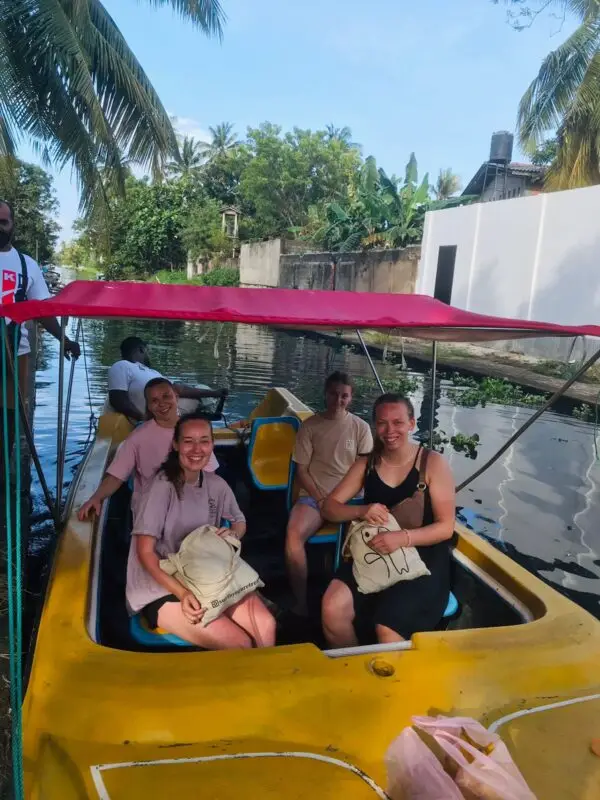
The Negombo Dutch Canal stands as one of Sri Lanka’s most captivating historical waterways, weaving through the coastal town of Negombo like a liquid timeline. This remarkable canal system tells stories of colonial ambition, trade routes, and local life that has flourished along its banks for centuries.
If you’re planning to visit Negombo, understanding the rich heritage of this Dutch-era marvel will transform your experience from ordinary to extraordinary.
The Historical Legacy of the Negombo Dutch Canal
The Negombo Dutch Canal dates back to the Dutch colonial period in Sri Lanka, constructed during the late 18th century. The Dutch recognized the strategic importance of Negombo’s location and built this extensive canal network to facilitate the transport of cinnamon and other valuable spices from inland areas to the coast.
This engineering feat stretches approximately 120 kilometers, connecting Negombo to Colombo and Puttalam. The canals served as vital transportation arteries, allowing Dutch traders to move goods efficiently while avoiding the unpredictable coastal waters.
The construction showcased remarkable engineering skills for its time. Dutch engineers carefully planned the canal’s route, ensuring it could accommodate flat-bottomed boats loaded with cargo.
Why the Negombo Dutch Canal Remains Important Today
Today, the Negombo Dutch Canal continues to play a significant role in local life. While it no longer serves as a primary trade route, the canal has evolved into a unique tourist attraction and a vital part of the community’s daily routine.
Local fishermen still use the canal to transport their catches from the lagoon to the fish market. The waterway provides a shortcut that saves time and fuel, maintaining its practical importance centuries after its construction.
The canal also supports a thriving ecosystem. Various bird species, including egrets, herons, and kingfishers, make their homes along the banks. Water monitors and other wildlife add to the canal’s biodiversity.
Exploring the Negombo Dutch Canal by Boat
One of the best ways to experience the Negombo Dutch Canal is through a traditional boat ride. Several tour operators offer canal cruises that provide intimate glimpses into local life along the waterway.
These boat tours typically last between one to three hours. You’ll glide past historic churches, traditional homes, and bustling communities that have called the canal banks home for generations.
Morning tours offer spectacular lighting for photography. The golden sunrise reflects off the calm waters, creating picture-perfect moments. You’ll witness fishermen setting out for their daily catch and families beginning their day along the canal.
Evening cruises provide a different atmosphere entirely. The setting sun paints the sky in vibrant oranges and pinks, while the canal takes on a peaceful, reflective quality.
Life Along the Canal Banks
The communities living beside the Negombo Dutch Canal have developed a unique way of life intimately connected to the water. Many homes feature small docks where families keep their boats, much like suburban driveways house cars.
Children can often be seen playing along the banks, swimming in designated areas during hot afternoons. Women wash clothes in the canal’s waters, continuing traditions passed down through generations.
Small businesses line certain stretches of the canal. Local shops, toddy taverns, and family restaurants create a vibrant atmosphere. The Sri Lanka Tourism Development Authority has recognized this area’s cultural significance and works to preserve its authentic character.
The canal zone reflects Negombo’s diverse religious heritage. Catholic churches stand alongside Buddhist temples, showcasing the area’s multicultural history influenced by Portuguese, Dutch, and British colonial periods.
The Dutch Architectural Heritage
Walking along the Negombo Dutch Canal reveals impressive examples of colonial architecture. Several Dutch-period buildings still stand, their distinctive gabled roofs and thick walls speaking to their colonial origins.
The Dutch Fort, though now in ruins, offers historical context for visitors. Built in 1672, this fortification protected the canal entrance and served as a defensive position against rival colonial powers.
Several churches near the canal showcase Dutch architectural influences blended with local craftsmanship. St. Mary’s Church, a prominent landmark, features elements that reflect this cultural fusion.
Traditional houses along the canal maintain period characteristics. Many feature Dutch-style doors, windows, and layout patterns that have survived centuries of tropical weather.
Environmental Significance and Conservation
The Negombo Dutch Canal faces modern environmental challenges. Pollution from nearby communities and commercial activities threatens the waterway’s health. Local and international organizations work together on conservation initiatives.
Recent cleanup campaigns have shown promising results. Community groups organize regular waste collection events, removing plastic and other debris from the canal waters and banks.
The Central Environmental Authority of Sri Lanka monitors water quality and implements regulations to protect the canal ecosystem. These efforts aim to balance development with environmental preservation.
Mangrove restoration projects along certain canal sections help filter water naturally and provide habitat for marine life. These initiatives demonstrate how traditional infrastructure can support modern sustainability goals.
Practical Tips for Visiting
When planning your visit to the Negombo Dutch Canal, timing matters significantly. The dry season from December to March offers the most pleasant weather for canal exploration.
Early morning visits avoid the midday heat and provide optimal lighting conditions. Most boat operators begin tours around 6:30 AM, perfect for photography enthusiasts.
Hiring a local guide enhances your experience tremendously. Knowledgeable guides share stories, point out hidden details, and provide cultural context that independent exploration might miss.
Dress modestly and respectfully, especially when visiting religious sites near the canal. Light, breathable clothing works best in Negombo’s tropical climate.
Bring sun protection, including hats, sunscreen, and sunglasses. The reflection off the water intensifies sun exposure during boat rides.
Photography Opportunities
The Negombo Dutch Canal offers endless photography opportunities. The contrast between colonial architecture and tropical vegetation creates stunning visual compositions.
Capture local fishermen at work, their traditional methods unchanged for generations. These authentic moments provide powerful storytelling elements for travel photography.
Bird photography enthusiasts will find abundant subjects. Patient observers can photograph various species in their natural habitat along the canal ecosystem.
Sunset shots from canal-side vantage points rank among Negombo’s most Instagram-worthy locations. The play of light on water, combined with silhouetted palm trees, creates magical imagery.
Connecting with Local Culture
Visiting the Negombo Dutch Canal provides genuine cultural immersion. Unlike heavily commercialized tourist attractions, the canal zone maintains its authentic character.
Stop at local eateries to sample fresh seafood caught from the lagoon that morning. Negombo’s fishing heritage means excellent seafood is always available along the canal.
Chat with locals who often welcome friendly visitors. Many residents speak English and enjoy sharing stories about their lives along the waterway.
Consider purchasing handicrafts from canal-side vendors. Supporting local artisans helps sustain traditional crafts while providing meaningful souvenirs.
Conclusion
The Negombo Dutch Canal represents far more than a historical waterway. It embodies centuries of cultural exchange, human ingenuity, and adaptation. This living monument continues to serve communities while offering visitors unique insights into Sri Lankan life.
Whether you’re a history enthusiast, nature lover, or cultural explorer, the canal delivers unforgettable experiences. Its blend of colonial heritage, ecological significance, and contemporary relevance makes it an essential destination for anyone visiting the Negombo area.
Plan your visit to this remarkable waterway and discover why the canal has captivated travelers for generations. The stories waiting along its banks will enrich your understanding of Sri Lanka’s complex, fascinating history.
